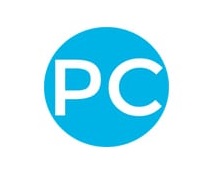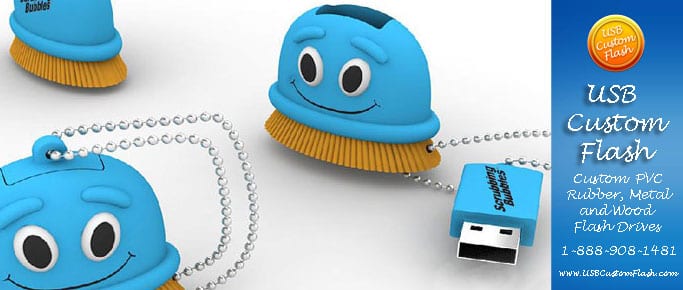Custom Flash Drive USB Designs, Custom Power Bank Portable Battery Chargers, Uncategorized
Scrubbing Bubbles USB Flashdrive
Ask any entrepreneur that’s just starting out what the most difficult aspect of their business is and they’ll likely point you to the challenge of reaching and retaining customers. Yes, marketing a new business or product can be a time consuming, costly endeavor — something many entrepreneurs don’t have.
Small businesses and startups generally don’t have the luxury of outsourcing their marketing needs to professionals. However, there are a handful of marketing practices available to entrepreneurs that don’t require them to burn through valuable resources to get this challenge under foot and get their business humming.
As the co-founder and CEO of a media technology startup, I’ve learned a few helpful secrets on how to market your business for free.
1. Create local awareness.
Gaining coverage in local papers, trade magazines and websites can greatly increase name recognition and educate people about your business – driving new customer acquisition. While many growing businesses in competitive landscapes may want to hire an expensive public relations firm, startups and small businesses can start off with some simple “do-it-yourself” PR.
Start by researching publications and writers that cover your industry — or local business. Once you have a grasp on the writers you want to reach and the stories they typically write for their publication, craft a pitch around your business that will pique their interest.
For example, if you’re in the widget business, explain how your widget business is impacting the local economy — or your industry. Entrepreneurs and small business owners can also subscribe to Help a Reporter Out. This free service provides queries for upcoming articles — allowing you to contact the writer directly.
2. Increase lead generation and customer engagement with email marketing.
According to a recent survey conducted by Ascend2, email is the most effective digital marketing tactic, the one that delivers the best ROI and the least difficult to execute. Start a customer newsletter that offers timely information about the business, special promotions or an inside look at the company. This helps build a community with your customers, and it keeps your product and business on their minds.
Entrepreneurs don’t need to pay an agency or marketing consultant to develop an email campaign either. You can do it yourself with free services, such as MailChimp, which allows small-business owners to send marketing emails, automated messages and targeted campaigns to customers. If you want to get more personal and send one-on-one messages, use a new free product called Sidekick that automatically notifies you when someone opens an email you sent them.
3. Leverage social media.
It’s free, easy to get started and offers a massive network of potential customers. The hard part is increasing your followers without wasting your precious time. Make sure you focus on value over volume. Identify the social channels that reach your customers best – including Facebook, Twitter, Pinterest, Instagram, LinkedIn and the new guy, Ello.
The goal is to provide your followers with something that’s useful, interesting and shareable. Start small, post a few times a week and learn who your audience is. Once you have an understanding of who’s consuming your content, and what they’re interested in, you can start ramping up efforts.
Also, tools like my company, Tack, allows you to take a post you’ve already created and turn it into an online ad outside of the social network — increasing your post’s reach.
4. Stand on the shoulders of your customers.
Satisfied clients can be a business’s best marketing tool. Actively engage pre-existing clients through PR, social media and email.
For example, pitching your business and a satisfied customer to a writer can be mutually beneficial for both parties. This tactic generally leads to a more compelling story and a stronger relationship between you and your customer. Once you have a customer army of spokespeople, let them share positive experiences and tell your company story for you.
Marketing a small or new business is extremely crucial to a company’s success but that doesn’t necessarily mean you have to invest a huge chunk of capital into it. Savvy, frugal entrepreneurs can find products and services that can help increase visibility and drive customer acquisition – without spending any overhead.
<strong>Considerations</strong></ul>
Advertising is usually more expensive than promotional campaigns. Small companies must purchase advertising in specific time frames or by space in print media. Their messages may transcend the target consumers they are trying to reach.
On the other hand, small companies can better control the cost of promotional campaigns. They may, for example, run coupons or incentive programs for specific stores. Samples may be limited to certain quantities to better keep costs in line with certain budget parameters. Moreover, promotional campaigns are usually more practical for higher-priced items like plasma televisions, copiers and industrial equipment. More information is required for these expensive products, making advertising cost-prohibitive and impractical.
John “ Hopelessly Happy” Graham
1-250-661-4057 Toll-Free 24/7/365
Head Office: Chandler Arizona.

